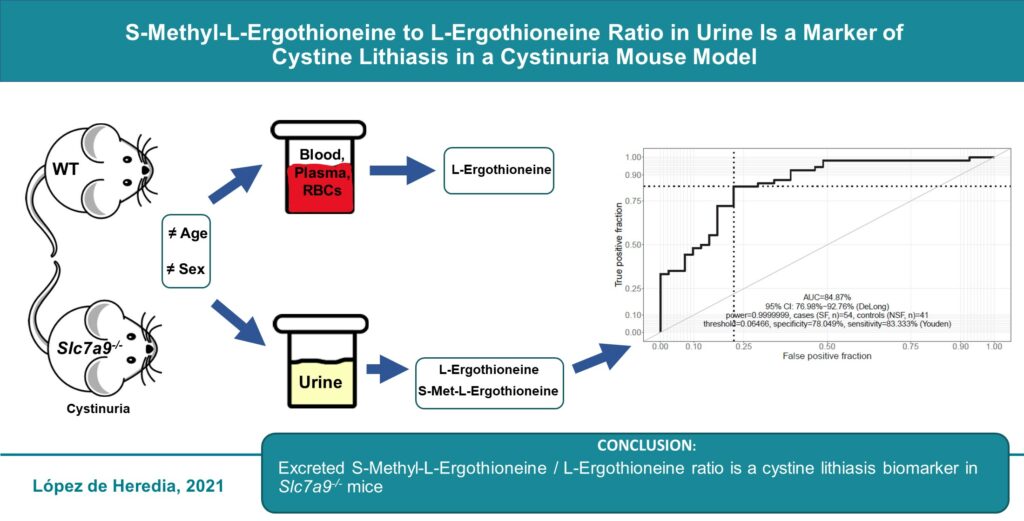Researchers find potential biomarker for appearance of stones in cystinuria
A new study has identified a possible biomarker for the appearance of cystine stones in the urinary tract in a murine model of cystinuria.
The work, published in the journal Antioxidants , has been coordinated by Virginia Nunes, researcher at the Institut d’Investigació Biomèdica de Bellvitge.
Patients with cystinuria usually intersperse episodes of stone formation (lithiasis) with other periods in which the presence of stones is not detected. On many occasions the stones are removed by surgical interventions.
The presence of cystine stones in patients is regularly monitored by various techniques such as crystalluria (detection and analysis of crystals in urine) or the determination of the ability of urine to dissolve cystine and various imaging procedures (X-rays, ultrasound, CT, …). All these methods have a limited predictive capacity in the case of cystine stones.
For all this, it is necessary to have new reliable and simple markers for routine clinical practice, which are capable of determining the presence of cystine stones in little advanced lithiasic stages or even predicting their appearance. Its existence would allow patients with cystinuria to access treatments in the initial stages of stone formation or preventive treatments if there is a high risk of appearance.
The possible biomarker of the presence of stones identified in this work, based on the quantification of two compounds in the urine, has been shown to be capable of detecting the presence of cystine stones in a mouse model of the disease regardless of age and age. sex.

